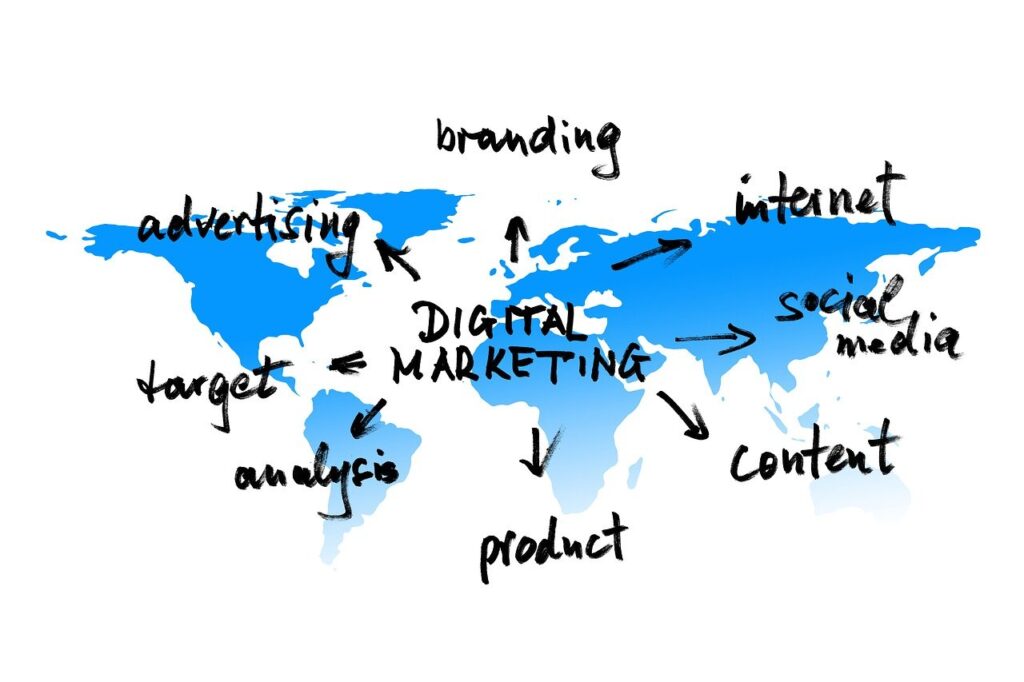After creating your Digital product, your next step is choosing where and how to sell it. As a Beginner you have several simple options and this guide will help you choose where to promote and sell your own products.
Hopefully you read my first article on ‘How to Create Digital Products for Beginners’ where you will have learnt the steps to get started and actually create your own digital product, in the niche and media of your choice.
This guide is your next steps.
How Are Digital Products Sold?
1. Online Marketplaces
Online marketplaces are ideal for beginners. This is because not only do they host your product in the format you have created it in (PDF, EBook, Excel) but they also handle customer payments, and delivery of your item direct to the customer, for you.
Some Examples:
- Etsy (templates, printables, art)
- Gumroad (ebooks, courses, downloads)
- Creative Market (design assets)
However, these market places do have some pros and cons to them.
Pros: They are easy to use. Also, by the nature of them being a market place they have Built-in traffic. This is great if you are starting out as you potentially have access to thousands of potential buyers, looking for products like yours.
Cons: These Platforms will charge Marketplace fees. After all they are in Business and they have to cover the costs of them hosting and driving traffic to the site. Fees can range from a flat monthly fee through to commission charged per sale made. You will need to check each platform.
Further, competition on these platforms can be fierce. Your product and listing may be lower down in rankings, and potential buyers may not even see you or your offering.

2. Your Own Website
Creating your own website is ideal If you want more control. With your own website you can create content, populate it with links to your products, host third party offers, create your own store etc. You are only limited by your imagination.
Some examples
- Sell your products on a platform like Shopify
- Use Payhip or Podia to create, host and process customers
- Offer downloads directly through a WordPress website with plugins
Again, like all options there are plus and minus points in creating your own site.
Pros: You have Full control, Also there are better profit margins for you as you are not beholden to third party market places. You own the content, the site and what you do with it. In other words a third party platform can’t just shut you down or bar you.
Cons: A website requires more setup. Your website will require constant monitoring and marketing to help it grow in visibility. You will need to pay for your domains, and keep them updated or they will expire.
3. Course Platforms
If you’re selling online courses and have created a digital product or subscribtion service to your content then you definately need (at least for ease and to start with) a recognised course hosting platform.
Some of the popular ones are:
- Teachable
- Kajabi
- Thinkific
These platforms can host your videos, your course content, your product downloads. They also can accept your customer payments, and give your students access to your material with uplinks and sub pages.

How Does a Beginner Promote Their Digital Product?
Even the best digital products won’t sell unless people know they exist. Beginners often skip marketing, but it’s one of the most important steps.
So how do you promote your offering?
The first thing you need to do is research where your Target Audience Hangs Out. Where do they consume media and content similar to yours? Once you know that, you then need to follow the next 5 steps.
1. Build a Simple Content Strategy
You don’t need to be everywhere. Choose one or at a maximum two platforms your audience uses. The reason for this is that you do not want to spread yourself too thin. Learn fully how one platform works at a time.
Then you can scale and often re-purpose content into a second, then third … platform.
Examples:
- Instagram or Pinterest for visual products
- YouTube or TikTok for tutorials
- LinkedIn if your product targets professionals
- A blog if you prefer written content
Share tips related to your product, show behind the scenes, and demonstrate its value to your audience.

2. Grow an Email List
Email marketing consistently outperforms social media because subscribers are already interested in your topic. The other benefit for you is that if you build an email list… You own it. You can market your list, contact them, send offers, drop them a ‘NEWS’ post etc.
Also, as mentioned before, if by some accident or you break one of the rules of a platform, you might be shut down, deleted or banned.
If this happens you lose your customer reach.
Ideas to build your list:
- Offer a free sample (a checklist or mini-guide)
- Put a sign-up form on your website
- Share it on social media
Once you have subscribers, send them helpful content and occasional product offers.
3. Use Soft Selling
Prospects and audiences don’t like to be sold at. Educate your audience instead of pushing sales aggressively. Keep your offer points to a minimum and let your audience ‘naturally flow or gravitate’ to them in your content.
For example:
- Show how your template solves a common problem.
- Share success stories.
- Give free value that naturally leads to your paid product.

4. Collaborate with Other Creators
Guest posts, podcast appearances, and social media partnerships all help to introduce your product to new audiences and markets. It is a way of ‘piggy- backing’ onto another creators audience.
You will need to make sure that firstly, you have something aligned or of value for another creators audience and secondly are prepared to reciprocate back to that creator.

5. Run Low-Budget Ads (Optional)
I have left this one until last. I would recommend that you fully learn about your platforms metrics and your content performance before you start spending money. Learn your craft organically. Only then, and when you are sure, look at paid advertising.
The reason for this is that if you don’t know what you are doing, paid adverts can quicly run away with you and before you know it you can spend vast sums.
However, Beginners often succeed with small ad campaigns on:
If you are going to go down the advertising route then dip your toe in the water to begin with. Start with $5–$10 per day and test what works. Test, Test, and Test and really study your analytics. oh, and set a ‘STOP’ on your budget so you dont overspend.
If you are looking for a fast start with making money from your own digital products then I have a course option for you, Created by a former freelancer. It’s a 30-day framework, with 3,000+ students launched with the content.
The course is a Validation-first approach that actually works, and in 30 days, you could have your first product created, launched, and earning you income.
Here’s a little transparency: my website contains affiliate links. This means if you click and make a purchase, I may receive a small commission. Don’t worry, there’s no extra cost to you. It’s a simple way you can support my mission to research and bring you quality content. I only recommend products that provide genuine value.”Thank You for your support.“
“This information is for educational purposes only and is not intended as financial or business advice. Individual results may vary based on effort, consistency, market conditions, product quality, and adherence to the program guidelines. The techniques have been tested with thousands of students across various niches and skill levels. This product does not guarantee specific income results and is not a substitute for professional business or legal advice when needed. Always do your own research and due diligence before making business decisions.”

